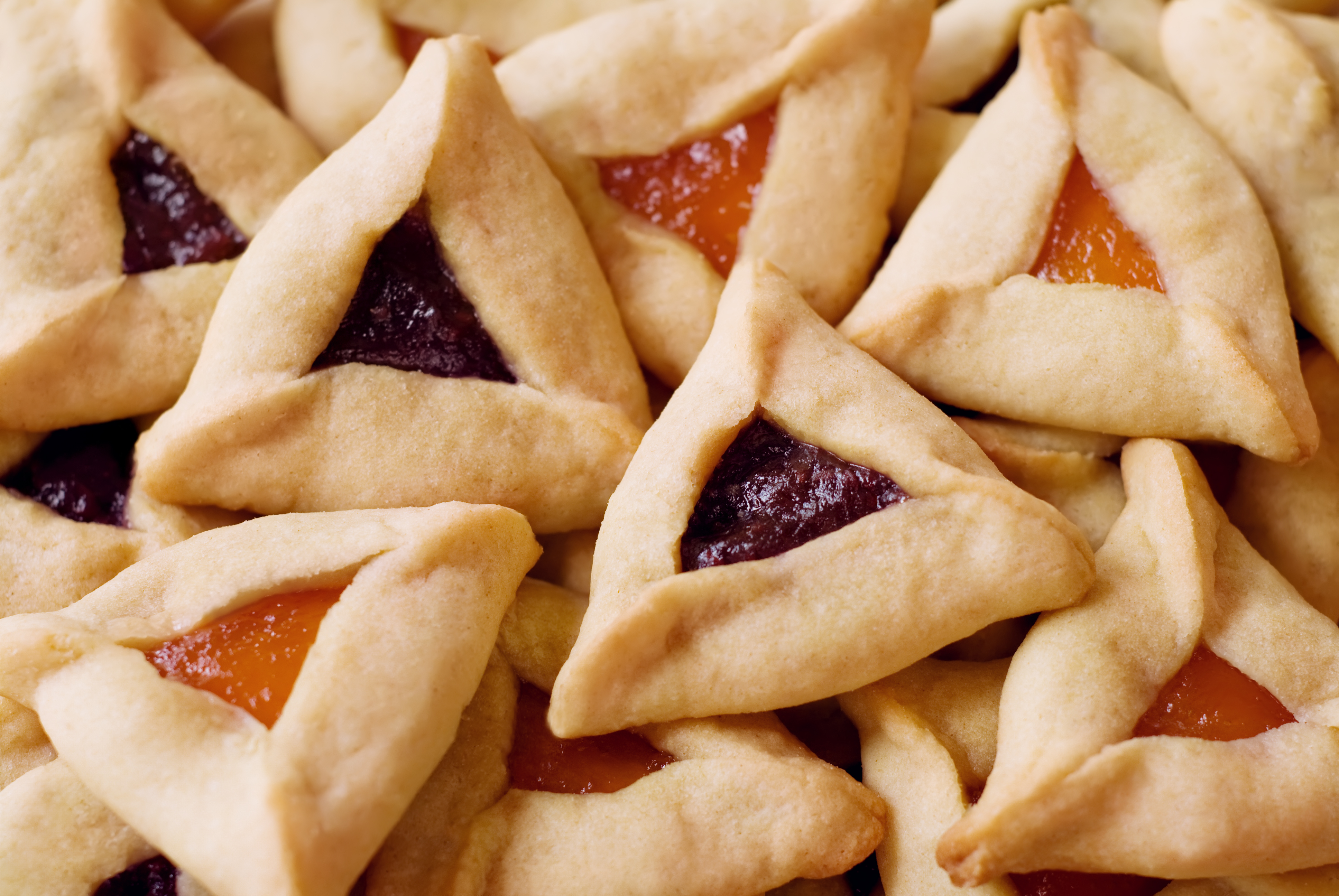This began as a series or thread of tweets, so we may add some more ideas as we celebrate Purim – and eat more Hamantaschen…

#Hamantaschen may just be a #Purim cookie treat, but perhaps a #Hamantasch has more in it than just jelly filling, it may hold some clues to the meaning of #Purim and its lasting messages.
First of all, the #Purim story made #Haman “eat his hat” (which was said to be 3-cornered like a Colonial hat) as he had the Jews cornered, the royal decree was sealed, it seemed like a done deal. But #Esther turned it all against him, and saved the Jews from genocide.
The #Megillah (Book of #Esther) reads like a novel of palace intrigue, its the only book in the Jewish Bible that doesn’t mention G-d’s name even once. But like a Hamantasch filling peeking through the dough opening, G-d is hidden & present, peeking out through the miracle.
Anyone who has baked a #Hamantasch knows that the triangular cookie starts off as a circle. Circle represents infinity, while triangle points in directions. Like the #Purim story, it may appear finite but the infinite is hidden within.
Pinching those #Hamantaschen corners is an important baking trick. No loose ends folks or you’ll have the jelly all over. In the #Megillah everything comes together at the end, #Purim story has a lot of parts but a cohesive story.
Be the Filling! One year we had a “Be the Filling” cutout at the UAlbany Purim Carnival. The dough is all the same, but we each add our own unique flavor. Invest of yourself! We each add to the Mitzvah and holiday celebration…
About the filling: Today’s favorites include raspberry, apricot, or even chocolate. But the old-fashioned traditional Hamantaschen were filled with sweetened poppy-seeds, hence the Yiddish-German name: “Mon” for poppy and “Taschen” for pockets, aka little dough pockets of poppy seeds. Why poppy-seed? The Midrash tells us that Esther, who kept her Jewish identity a secret (at first) in the king’s palace, kept a vegetarian diet for Kosher reasons and favored foods that had seeds in it (probably for their nutritional value). Interestingly, places like Afghanistan (not far from Persia) are among the world’s largest growers of poppy plants (mostly because of their use in making heroin) so it makes sense to be a choice seed for Esther. —- What do we learn from this emphasis on seeds? First of all that we can be creative and resourceful to keep Kosher to whatever degree we can, regardless of surrounding circumstances. Seeds also emphasizes potency and potential, and how we need more seeds of Judaism (that which can grow to reproduce and plant anew and bear fruit) in our lives.
